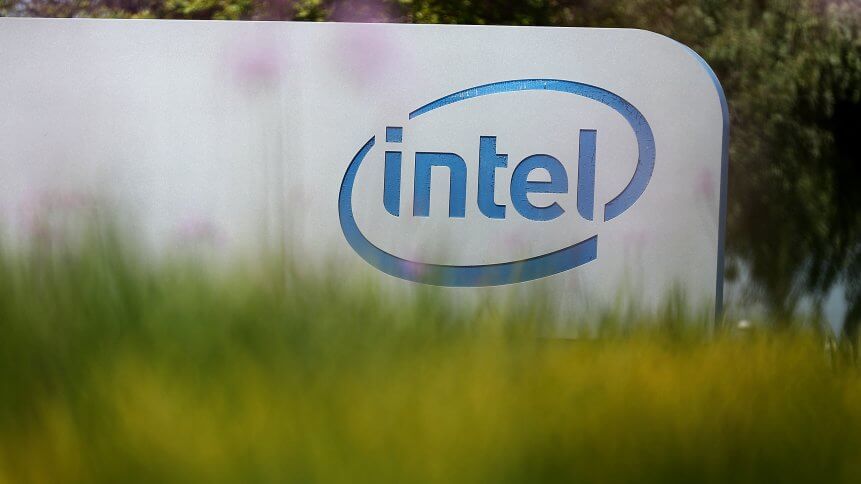Even lingering chip shortages can’t knock Intel and Samsung down

- Despite persistent chip deficits, Intel recorded strong Q4 2021 revenue — mainly driven by its Data Center Group segment
- Intel’s PC platform volumes continued to dip in terms of units sold due to supply chain issues — but surged in terms of dollars
- Samsung’s semiconductor sales rose 31.6% last year, accounting for 13% of global market share, while Intel made 0.5% growth and took 12.5% of market share
Today, chip giants Intel Corp. and Samsung Electronics Co. announced their respective financial results for the year 2021 and despite battling with lingering chip shortages and supply chain issues, both companies recorded stellar numbers. While both semiconductor giants reported their highest quarterly and yearly revenue ever, Samsung attributed theirs to an increased sales of consumer products.
Intel’s record revenue, on the other hand, was led by an all-time record quarter for its Data Center Group (DCG), which saw strong recovery in the server markets at both enterprise and governmental levels. Furthermore, experts estimated that Samsung Electronics did enough to surpass Intel and become the leading chip maker by revenue in 2021.
Let’s take a peek at the respective hardware giant’s stellar performances over the whole of 2021.
How Intel fared after another year of chip shortfalls
To Intel’s CEO Pat Gelsinger, “Q4 represented a great finish to a great year. We exceeded top-line quarterly guidance by over US$1 billion and delivered the best quarterly and full-year revenue in the company’s history.”
Basically, Intel’s Q4 revenue was a full US$1.2 billion above the company’s outlook, at US$19.5 billion while yearly revenue came out US$74.7 billion. Profits however weren’t nearly as rosy: net income went down 21% in the quarter and 5% year-on-year to US$4.6 billion and US$19.9 billion, respectively.
Additionally, Intel’s presentation shows laptop revenue was down 16% year-on-year because it couldn’t ship nearly as many units as it likes. But it’s fair to note that the chip giant is making more money from each one: the average selling price of those laptop components went up 14%, according to Intel. Desktops revenue in contrast, are up.
Making up for some of the loss from the laptop segment is its Data Center Group (DCG), up 20% year over year to US$7.3 billion, mainly due to strong server recovery in enterprise and government. Smaller businesses like Intel’s Internet of Things Group (IOTG) and Mobileye, its self-driving car tech company, also saw more demand, up 36% and 7% in the fourth quarter of last year compared to the same period a year before.
Gelsinger also shared that the company’s next-generation server chip, Sapphire Rapids, is on schedule to start shipping this quarter. Production, according to him, will ramp in the second quarter.
Samsung soars with record sales, again
After having three consecutive quarters of good sales, Samsung recorded another quarter of record sales in the final three months of 2021. The South Korean giant’s profit for the fourth quarter climbed 65.13% from the previous year, reflecting higher sales of memory chips and higher margins in chip contract manufacturing.
Quarterly sales rose 24.39% from the prior year, according to its Thursday statement. Operating profit improved by 50% and sales were up 23%. In contrast, according to estimates compiled by Bloomberg, analysts had predicted 11.1 trillion won on average.
“The fourth-quarter revenue growth was driven mainly by the finished product businesses, with expanded sales of premium smartphones, including foldable phones, as well as TVs and home appliances. Operating profit declined from the previous quarter due to a special bonus payment to employees, but rose from a year earlier, driven by the semiconductor businesses,” the company said.
Even Samsung’s foundry business posted a new record for quarterly revenue, while profitability decreased slightly from the previous quarter due to a rise in costs related to ramping up advanced process nodes.
The semiconductor giant believes that for 2022, amid expectations of a recovery in global IT demand, the company’s components business will increase the production of advanced processes and enhance leadership in next-generation products and technology.
“In the finished product businesses, the company will strengthen the premium segment lineup and create new user experiences by enhancing connectivity and synergies between devices. However, challenges associated with supply issues and Covid-19 are likely to persist,” it added.









